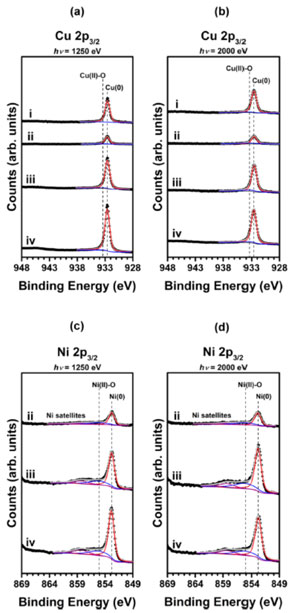Cerdanyola del Vallès, 22nd July 2019. The quest for the best catalysts in industry has been a long one, but a new study by Universidade Federal do Rio Grande do Sul in Brazil, in collaboration with the ALBA Synchrotron, has come a step closer. For the first time, researchers have found evidence of what could be the origin of the SMSI effect in catalysts supported on cerium oxide.
Catalysts are used to increase the reaction rate of a given chemical reaction, and have applications in a wide variety of fields. In heterogeneous catalysis, the catalyst is usually composed of metal nanoparticles supported on metal oxides. Among them, CeO2-based catalysts have unique structural and atomic properties that make them suitable in the cutting-edge environmental industry of fuel cells and hydrogen. In this field, they are being explored as high-end photocatalytic reactors for the thermal splitting of water and carbon dioxide. However, what has been termed as the SMSI effect can undermine their desired properties.
The strong metal-support interaction (SMSI) effect is a subject of intense research nowadays since it has a direct influence on catalyst performance. It can be identified by the presence of a capping layer from the support at the nanoparticles surface during reduction treatment. In this latest work, catalysts composed of Cu-Ni bimetallic nanoparticles supported on cerium oxide have been studied with unprecedented detail, enabling researchers to discover the electronic changes occurring when they are exposed to real conditions.
The results, published in ACS Applied Nano Materials, show that the interaction of Ce atoms in the capping layer with Cu and Ni atoms depends on the Ce oxidation state, which is determined by the surrounding atmosphere, as well as Cu concentration.
This capping layer is created on the nanoparticles surface during the reduction treatment that activates the catalyst and usually depresses the catalytic power. The layer can be removed with an oxidizing atmosphere, but by this time it has often already had its effect on the reactivity and stability of the catalyst.
Using the NAPP endstation at ALBA to probe Cu-Ni atoms at different depths
The measurements were performed at ALBA's CIRCE beamline for photoemission spectroscopy. In particular, scientists used the Near Ambient Pressure Photoemission (NAPP) endstation.
Results showed a higher concentration of Cu atoms at the surface after exposing them to a reducing atmosphere, thus demonstrating a migration of these atoms within the bimetallic nanomaterial. Similar measurements were performed after exposing the catalyst to an oxidising CO2 atmosphere. As expected, on that occasion the Cu/Ni ratio decreased, which can be explained by the migration of Ni atoms to the catalyst surface.
This migration effect, together with the change of Ce oxidation state, from Ce(IV) to Ce(III), contribute to the explanation of the precise nature of the SMSI effect between the capping layer and the bimetallic nanoparticles, which inactivates areas of the catalyst surface only for compounds above a certain Cu concentration.
In this study, the underlying atomic processes that cause the SMSI effect in Cu-Ni nanoparticles supported on CeO2 have been described for the first time, and make new inferences about the nature of this effect on nanoparticle catalysts.
Heterogeneous catalysts can be more easily recycled, but their characterisation and optimisation is often a challenge. A better understanding of the SMSI effect is the path towards a new generation of smart catalysts that are more selective, stable and sustainable. "We hope, based on these results, to be able to develop improved catalysts for fuel generation in the CO2 dissociation reaction, which will also help in current efforts against global warming", says Fabiano Bernardi researcher from the Laboratório de Física de Nanoestruturas from Universidade Federal do Rio Grande do Sul (Brasil).

Fig. Near Ambient Pressure – X-ray Photoemission Spectroscopy allowed the identification of the chemical components of the nanoparticles in situ.




